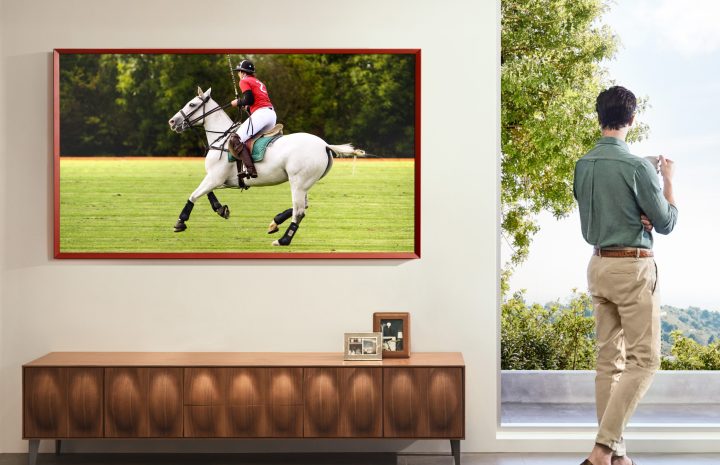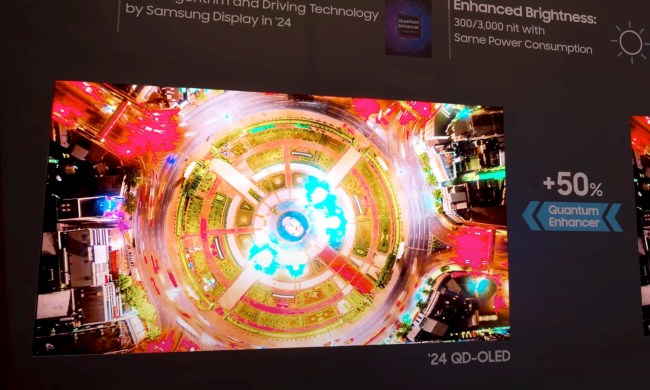It’s easy to read Samsung’s CES 2022 press release and scoff. Maybe it’s at the images of beautiful TVs you probably can’t pay for affixed to designer concrete walls in impeccable homes that you most certainly can’t afford. Or perhaps it’s the models doing model things in those impeccable (and impeccably lit) homes. Or maybe it’s the idea of a remote control without batteries. (Which almost certainly isn’t actually how that works, but that’s neither here nor there.)
Or, perhaps, it’s the idea of an “NFT aggregation platform” being built into the television. It sounds insane — baking something that most people don’t understand, let alone engage in — into a TV. Most of us can’t even describe what a non-fungible token is, let alone tell someone how to go get one. It’s a multi-layered process that’s far more difficult than taking a screenshot of something you saw on Instagram and then sticking it up on your TV.
But that’s also not the point.

Samsung is getting out ahead of the NFT game, despite somehow not using the term NFTV, and that’s what companies like Samsung are supposed to do. And it’s doing so in a way that combines its current products — televisions — that already are excellent ways to showcase digital art, whether it’s your kids’ finger paintings, or someone slightly better known (but perhaps not nearly as loved). NFT’s are just a new, confusing, overhyped, exciting, silly way to own art, which in itself can be and often is absurd — just as art is meant to be.
“In 2022, Samsung is introducing the world’s first TV screen-based NFT explorer and marketplace aggregator,” reads the press release, “a groundbreaking platform that lets you browse, purchase, and display your favorite art — all in one place.”
It’s that simple. It’s trying to create order out of chaos. Sure, it’s the sort of thing you’d expect to see from the sort of people you see in the promo pics — staring pensively at whales or giraffes or polo players or lily pads or bored apes — pay money to have the “only” or “original” copy digitally. But it’s also the sort of thing that makes perfect sense when your televisions double as digital art frames.

While the devil is in the details, Samsung has that covered, too, apparently. “With the new Platform, you can preview an NFT before purchasing it and even learn about its history — from who created it, to what comprises its blockchain metadata.” And that’s the ball game. That’s what separates this software feature from the media viewer that’s been built into budget-level Roku boxes for years now. You’ll be able to hold your brandy in one hand and your new Eco Remote (remember, it doesn’t have batteries apparently) in the other, and show your country club friends how you have the only Bored Ape Yacht Club NFT in existence. Or something. Never mind that it doesn’t mean nobody else would be able to display the same image on their own NFTV.
There’s another, more cynical answer to all of those, of course. And it’s that when you’re announcing new TVs at a trade show that’s lousy with TVs, you need something to stand out. And what’s the hot trend right now? TikTok. What’s the less-hot trend that’s guaranteed to generate headlines? NFTs.
The feature is as much about getting folks talking — good and bad — as it is about digital art. It doesn’t matter whether any of us actually uses this NFT marketplace or not.
Samsung just wanted us all talking about it right now. Well-played.



